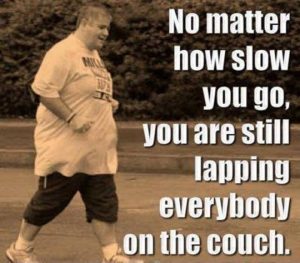The Tape Measure Tells All: What Your Neck Size Says About Your Long-Term Health
Forget the crystal ball. Toss the tarot cards. If you’re looking for a surprisingly potent predictor of your future health, you might just find it hanging in your sewing kit.
We spend so much time focusing on the scale, the waistline, and the BMI chart, but research is pointing to a different, often-ignored measurement: your neck size.
It sounds strange, right? How could the circumference of your neck possibly be linked to something as profound as your risk for heart disease or even mortality? As it turns out, this unsuspecting body part is a powerful window into your overall health.
The Science Behind the Measurement
So, what’s the connection? It’s not about the neck itself, but what it often represents—excess upper-body fat.
Unlike the subcutaneous fat you can pinch just under your skin, fat deposited around the neck and upper torso is more likely to be visceral fat. This is the deep, harmful fat that wraps around your organs, pumping out inflammatory chemicals and disrupting your body’s normal functions.
Several major studies have linked a larger neck circumference to a host of health issues:
Cardiovascular Risk: A study published in the Journal of the American Heart Association found that neck circumference was a stronger predictor of high blood pressure than even abdominal obesity in some populations.
Sleep Apnea: This is one of the strongest links. Excess neck fat can physically narrow your airway, leading to obstructive sleep apnea—a condition where you stop breathing repeatedly during sleep. Untreated sleep apnea dramatically increases your risk of heart attack, stroke, and type 2 diabetes.
Metabolic Syndrome: Larger neck size is closely associated with a cluster of conditions—including high blood sugar, high blood pressure, and unhealthy cholesterol levels—that set the stage for heart disease and diabetes.
In essence, your neck size acts as a simple, external marker for the dangerous internal metabolic processes that can shorten your lifespan.
How to Measure Your Neck (The Right Way)
Before you panic and grab a string, let’s do this correctly. You’ll need a flexible, non-stretchable measuring tape.
Stand tall. Relax your shoulders and breathe normally.
Find the spot. Locate the midpoint of your neck. For most people, this is just below your Adam’s apple (larynx) and above the V-shaped notch at the base of your neck.
Keep it level. Ensure the tape is horizontal all the way around. Don’t pull it tight—it should be snug against the skin without compressing it.
Look straight ahead. Keep your head in a neutral position, looking straight ahead. Don’t puff out your chest or slouch.
What Do the Numbers Mean?
While thresholds can vary slightly by study and ethnicity, general guidelines suggest increased health risk begins at:
For Men: A neck circumference greater than 17 inches (43 cm)
For Women: A neck circumference greater than 16 inches (41 cm)
Important Disclaimer: This is a screening tool, not a diagnosis. A larger neck size doesn’t mean your fate is sealed. It’s a red flag, a piece of data that empowers you to take action.
What to Do If Your Neck Size is a Concern
If your measurement falls above the recommended range, don’t despair! This isn’t a death sentence; it’s a wake-up call. The goal isn’t to “lose neck fat” specifically (spot reduction is a myth), but to reduce your overall body fat, which will inevitably include your neck.
Here’s your action plan:
Talk to Your Doctor. Mention your concerns and the research. They can check for underlying issues like sleep apnea, high blood pressure, or insulin resistance.
Focus on Whole-Body Fat Loss. You can’t target your neck, but you can lose fat everywhere through a consistent caloric deficit.
Prioritize Strength Training. Building lean muscle mass boosts your metabolism, making it easier to burn fat. Compound movements like squats, deadlifts, and rows are your best friends.
Incorporate Cardio. Both steady-state and high-intensity interval training (HIIT) are excellent for improving cardiovascular health and burning calories.
Clean Up Your Diet. Focus on whole, unprocessed foods: lean proteins, complex carbs, healthy fats, and plenty of fiber from vegetables and fruits. Reduce added sugars and refined carbohydrates.
The Bottom Line: Knowledge is Power
Your neck size isn’t a mystical countdown clock, but it is a tangible, measurable clue about your internal health. It reminds us that health risks aren’t always visible in the mirror or fully captured by the number on the scale.
So, grab that tape measure. Use the information not as a source of fear, but as motivation. It’s one more data point on your fitness journey, empowering you to make the changes that lead to a longer, stronger, and healthier life.
Now, put the tape measure down and go get moving!



